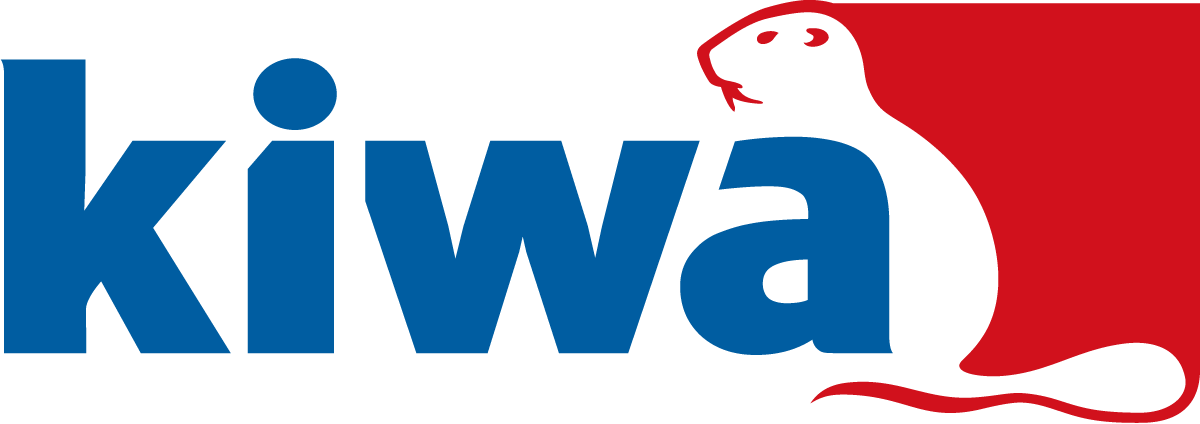
Digital transformation accelerates fire safety inspections

Due to regular changes to buildings, tightening of building regulations and the complexity of the subject, many property owners and tenants outsource this aspect of asset management to a specialist such as Kiwa R2B. The inspection of fire safety measures already starts during the construction of a building. In addition to these initial inspections, the company conducts follow-up inspections. Fire safety inspections in buildings are covered by many regulations. The Dutch Accreditation Council checks Kiwa R2B and issues it with accreditation for carrying out fire safety inspections.
Changes to regulations
In the past, the inspection process relied to a large extent on pen-and-paper. This made it difficult to follow up on changes to regulations and led to gaps in information about the condition of fire safety systems and necessary adjustments. Adjusting templates in the word processor MS Word was laborious and offered too few possibilities to monitor the quality of the inspection process. A market consultation revealed that no packaged software was available to digitize asset management tasks such as inspections.
In order to gain more control over the inspection process while remaining flexible to enable compliance with changed regulations, Kiwa R2B created the Digital Fire Inspection Tool (DFIT) using Novulo's composable low-code platform. The application, which required a specific asset management configuration, was given a flying start from the store integrated in the platform, with more than 2,500 reusable and field-proven components. The company was able to incorporate applicable regulations and facilitate specific features for fire safety systems, such as being able to define different systems within buildings.


General
Common functionality, such as relationship management and a document generator (for question & answer forms and reports) and an in-application integrated service management capability, complemented the application. Where necessary, components were adapted in the platform using the low-code tooling, or added if they were missing. Kiwa R2B can customize the inspection and reporting process in the DFIT application to its own needs, and raise the quality control of the reports to a higher level. This application also offers the organization the flexibility to efficiently implement changes in the regulations in the reports.
Adoption accelerating
In this digital transformation, Kiwa R2B has opted to largely develop the low-code software itself, by employees who themselves have worked as inspectors, so that they could contribute their knowledge of the inspection profession and fire safety. This use of citizen development keeps the lines of communication short. In consultation with management and working groups, a scrum approach is used to draw up a sprint timetable to determine the prioritization in the backlog and in application development.
The adoption of the digital inspection process is on the rise now that, after getting input from the organization, inspectors can go directly from their report to the underlying template in the case of changes. The acceleration of digitization thanks to the use of DFIT has led Kiwa R2B to include other business processes such as quotation, time registration and invoicing in the company's own application, using standard components from the Novulo platform. This will allow the existing legacy ERP to be phased out in due course.

Interview: Staying flexible at all times
To accelerate the digitization of inspections, improve efficiency and enable quality control, Kiwa R2B opted to build an application using Novulo's composable low-code platform, which provides access to an ecosystem of ready-to-use components. The combination of better process support and citizen development will play an important role in the further rollout of this DFIT (Digital Fire Inspection Tool) application, says IT information manager Robin Scholte of Kiwa R2B.

Who works with the Novulo software?
“We ask inspectors to work digitally, but to a certain extent people have the freedom to use their preferred tooling from a digital toolbox. Some prefer to make their notes with a keyboard in MS Word, others with a digital pen on a PDF. They also have digital drawings of the building on their tablet, so they can make notes. They use these to check off which fire detectors they have tested, and for anomalies encountered during the inspection. Some inspectors prefer to make these kinds of notes during the inspection round and then complete the report at the office. This is increasingly taking place in the DFIT application.
Initially, there was some skepticism about working with DFIT. The user-friendliness has improved considerably recently. Inspectors are now presented with a preview of the report in DFIT, as they are used to getting in Word. The preview contains links with which parts of the report can be amended immediately. Since the latest release, working in the application has become easier. Colleagues who initially had difficulty with the software now no longer want to go back to Word.”
What did you want to achieve?
“The DFIT application is increasingly taking on a central role, because employees understand that there is much to be gained in terms of efficiency in the development of reports and quality control if you work in a single system. I expect that 80 percent of the reports will be in DFIT this year, compared to 50 percent last year. If the Dutch Accreditation Council indicates that something is missing or that something needs to be amended, we respond immediately by implementing the relevant changes centrally in the application. The entire organization can then continue with this basis. That flexibility is very valuable to us. Process support has also been improved because we can centrally monitor the progress of reports. The uniform way of working gives us flexibility and optimum control at the same time.”
Why did you opt for citizen development?
“The first reason was that low-code software was the best option for us. We knew from a market consultation that there was no packaged software available for properly recording fire safety inspections in accordance with the applicable regulations. If you want to automate reporting, you know that the software has to be tailored to the specific wishes that we have as a customer. Novulo's composable low-code platform turned out to support this well, because it contains many standard components and building blocks while also being fully customizable. As a result, the software for fire safety inspections was quickly realized, and at the same time it met the unique requirements that we have as an organization.
The second reason we opted for citizen development was because one of the inspectors at Kiwa R2B knows a bit about IT. He had already programmed scripts himself and had some knowledge of software development. He turned out to be the ideal person to help set up the DFIT application. Subsequently, the management concluded that the IT organization needed further reinforcement. One is never enough, they say. We now employ two developers. And you need more than just content specialists. You need IT information management to bridge the gap between the organization and the technology, to provide process analysis, user support and the like. All in all, that is a considerable investment in manpower.”
{{serverState.parameters.intro.titel}}
What has citizen development delivered?
“First of all, a raft of business benefits. If development takes place on your own work floor, you can switch quickly and adjust projects. In the fortnightly scrum planning meeting you can continue to listen carefully to the organization and make adjustments as necessary, so that there is more control around the entire change process. Sometimes more attention is paid to broadening the applications by building in new types of inspections in the DFIT application. At other times, giving the applications more depth is prioritized, in order to expand the process support.
The learning curve has shown us that it never goes fast enough. Even if you as an organization contribute to the development, you still progress more slowly than the organization would like. In our case, it took time to get the organization up and running, due to a low IT maturity level. In addition, applications are never finished. In particular, now that the reports are increasingly being recorded in DFIT, we want to raise the process-based support of the DFIT application to a higher level. We are expanding by also bringing the quotation process, time registration and invoicing into DFIT, so that we will be able to phase out our legacy ERP in the near future.”
How do you find working with Novulo?
“Novulo's platform offers a lot of options for adapting the software to your own situation. It is very flexible, among other things thanks to the reuse of existing components. That same flexibility is reflected in the organization of Novulo. If we have a question, the company is quick to respond. There is plenty of knowledge and expertise about our organization and business process at Novulo. And this is comprehensive, it doesn't just cover the technical side of things. Even now that we are providing more depth to our CRM processes in the DFIT application, there is always someone at Novulo who can help us with this.
Of course, not everything is perfect. For example, scaling up the rollout has sometimes been difficult in the past. Especially now that the demands regarding digitization from within the organization are increasing, there are occasionally some bottlenecks. Sometimes more patience is needed than we would like, even though we ourselves are all too familiar with these resource constraints. It's just hard to find good people in IT.”

What can Novulo do for you?
This example from Kiwa R2B shows that the Novulo web application is uniquely capable of making a success of a digital transformation that goes beyond SaaS or packaged software. The Novulo platform contains a rich collection of ready-to-use components from which a unique application can be composed in a short time.
The Novulo software platform has been designed in such a way that organizations can expand their application environment step-by-step, in a controlled way and closely intertwined with the business strategy. If you would like to find out more, then download our white paper ‘Agility starts with composed software’. If you want to see the software in action right away, get to know the Novulo platform in our interactive demo webinar.